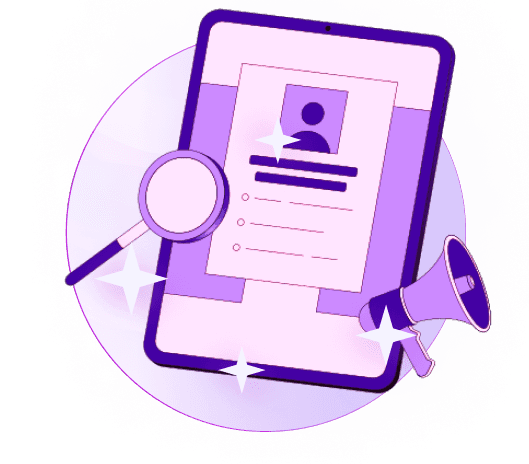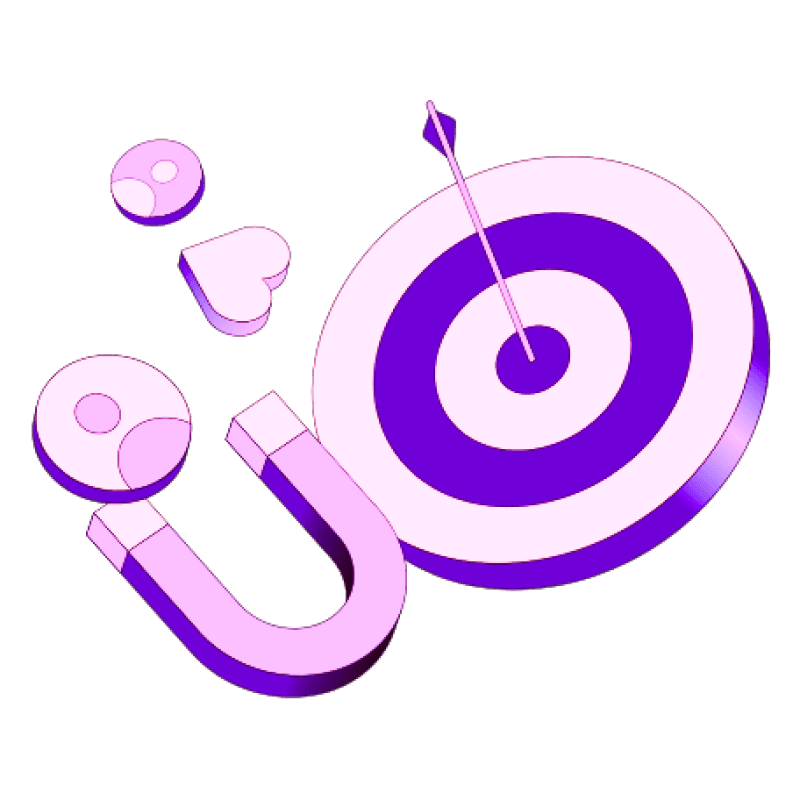Blogs
Articles

Customer Journey Automation: How to Streamline Every Interaction
Businesses using marketing automation see a 14.5% increase in sales productivity and reduce marketing overhead by 12.2%.
This piece outlines the key steps to implement customer experience marketing automation that delivers individual-specific experiences at every touchpoint. You'll learn to map your customer's path and set up triggers that respond to specific behaviors. These elements help reshape the scene where casual browsers become loyal customers who promote your brand.
The time has come to automate your customer experience while maintaining the personal connection your customers value.
What is customer journey automation?
Customer experience automation is the life-blood of managing interactions throughout a customer's relationship with your brand. The automated system tracks and analyzes all communications between you and your customers. This starts from their first interaction and continues through purchase and beyond.
Customer experience automation differs from simple workflow automation that deals with internal processes. The system is outward-facing and puts customers first. It arranges marketing, sales, service, and compliance functions to create a consistent experience at every touchpoint.
This technology's core parts include behavioral triggers like form submissions or policy renewals and predefined workflows. It also features smooth integrations with existing systems and up-to-the-minute data analysis to optimize continuously. Modern systems make use of AI and machine learning to predict customer's needs. These systems deliver tailored content at just the right moment.
Customer expectations keep evolving in today's digital world. Nearly a third of US customers expect answers to their questions on social media within 24 hours.
What is customer automation?
Customer automation serves as the technological foundation of modern customer support systems. It employs artificial intelligence (AI), machine learning (ML), and robotic process automation (RPA) to streamline repetitive customer service tasks. Businesses can handle customer interactions more efficiently without constant human intervention using this approach.
Customer automation's main goal is to manage everyday support activities. These include answering common questions, processing standard requests, and directing questions to the right departments. Companies can now offer 24/7 support while cutting operational costs with this technology.
Customer automation is different from marketing automation in key ways. Marketing automation works as part of the customer's overall experience. It focuses on streamlining tasks like lead generation, scoring, drip campaigns, and segmentation. Customer automation, however, deals specifically with service operations.
The system works in a clear sequence. It captures customer questions, understands intent through natural language processing, creates appropriate responses, and delivers solutions. This creates an uninterrupted experience that can resolve up to 80% of routine inquiries automatically.
Companies that use customer automation see benefits beyond just saving money. They deliver improved customer experiences, offer better support availability, and optimize their resource allocation.
Map the Customer Journey
A well-laid-out customer experience builds the foundation you need for automation that works. Let me break down this vital process to show you how customers connect with your brand at every point.
Identify key stages: awareness to advocacy
Your customer's experience typically moves through five distinct stages that tell their story:
Awareness: The moment customers first find your brand through ads, social media, or word-of-mouth
Consideration: Customers look at options, compare products, and assess solutions
Decision/Purchase: Customers make their buying decision and complete transactions
Retention: Building positive relationships through support and communication
Advocacy: Happy customers become your brand champions and spread the word
Understand customer touchpoints
Every time customers interact with your brand, directly or indirectly, they experience a touchpoint. These interactions shape how people see and feel about your business. Spotting these touchpoints helps you know if they add value to your customer's experience.
Main touchpoints you'll find:
Digital interactions (website, social media, emails)
Physical encounters (in-store visits)
Customer service contacts
Post-purchase communications
Use visual tools for journey mapping
Visual mapping tools help turn scattered ideas into clear pictures. Pick software that lets you create dynamic visuals showing your customer's path through each stage. Your teams can work together better with these tools to focus on customer experience and find spots for automation.
Good journey maps show actions, mindsets, emotions, and areas to improve at each step. Data from analytics platforms adds rich details about potential customers, such as where they're from and how often they buy.
Set Up Triggers and Rules
After mapping your customer's trip, you need to set up smart triggers and rules that automate tailored interactions.
Define behavioral triggers like email opens or cart abandonment
Behavioral triggers start automated responses based on specific customer actions. Digital signals include cart abandonment (which affects more than 70% of online shopping carts), email opens, website browsing patterns, and wishlist additions.
The timing of abandoned cart recovery makes a big difference. Recovery emails sent one hour after abandonment get about 16% conversion rates. You should follow up with more messages at the 24-hour and 72-hour marks to maximize recovery potential.
Segment customers based on actions and attributes
Good automation needs customers organized into meaningful groups based on their behaviors, not just demographics. Behavioral segmentation shows how customers associate with your business during their buying process.
This method helps you spot cross-sell opportunities, create tailored experiences, and design better buying paths. Customer behaviors associate strongly with retention. Users who take specific actions show much higher retention rates.
Establish rules for workflow entry and exit
Entry criteria control which customers start automated trips. These include:
Event-based triggers (transactions, sign-ups)
Attribute filters (demographics, purchase history)
Combined conditions using AND/OR logic
Time-based constraints
Exit criteria define when customers leave workflows. This covers journey completion, goal achievement, re-entry permissions, and inactivity timeouts.
Build and Personalize Workflows
Your next step after setting up triggers and rules involves creating smart workflows that respond to customer actions. A good automation system needs proper technical setup and careful customization.
Create automated workflows for each trip stage
Stage-specific workflows help maximize customer engagement throughout their lifecycle. You can implement:
Onboarding sequences that welcome and educate new customers
Milestone celebrations that recognize achievements and anniversaries
Renewal reminder series with timely notifications and options
Engagement reactivation campaigns for inactive accounts
Use dynamic content for customized messaging
Dynamic content adapts automatically based on customer data and creates truly individual experiences. Studies show that 80% of consumers interact more with companies that offer customized experiences. The technology uses rules to automate content changes for each contact.
Add up-to-the-minute customer trip automation
Real-time automation delivers relevant content through AI-powered systems that analyze customer feedback instantly. This system helps you interact with customers based on their unique context, not just their latest interaction.
Use a customer trip automation platform
The right platform makes personalization efficient at scale while combining customer data from all sources. Your platform should include behavioral triggers, dynamic content delivery, and AI capabilities that predict customer needs.
Find out how Persana can help build and customize your customer trip automation workflows. Visit persana to learn more.
Monitor, Optimize, and Improve
Your customer journey automation strategy starts working after implementation. Success depends on regular monitoring and optimization.
Track key metrics like engagement and conversion
The right metrics form the foundation of good measurement. Your business should track key performance indicators (KPIs) that include conversion rates, customer satisfaction scores, engagement levels, and Net Promoter Score (NPS). Retention rates are vital because they show how loyal and satisfied customers are. Companies using customer journey automation see better satisfaction metrics and run more efficiently.
Use A/B testing and funnel analysis
A/B testing helps you compare different content versions to find what works best. Each test looks at a control group (version A) against a variant (version B). You can pick the winner based on clear statistical results.
Funnel analysis helps find where customers drop off or get stuck in their journey. Research shows that companies can boost conversions up to 24% when they make good use of funnel analysis.
Continuously refine workflows based on data
Teams need to document what they learn to keep improving. One expert says that "sharing and evangelizing the learnings" helps success spread across teams. Regular reviews every 3-6 months help measure journey performance against KPIs.
Adapt to changing customer behavior
Customer priorities change faster due to market trends and economic changes. AI-powered journey analytics can spot drops in engagement or rising complaints. This allows teams to fix issues as they happen.
Ready to take your customer journey automation to the next level? Explore Persana.ai at persana for advanced monitoring and optimization tools.
Conclusion
Customer experience automation gives businesses a chance to improve customer interactions and reduce costs. A detailed customer map shows how people move from discovering your brand to becoming loyal advocates. This helps identify key touchpoints for customized participation. Smart behavioral triggers and segmentation rules help create meaningful interactions with customers at the right time.
Customized workflows power successful automation strategies. Stage-specific sequences with dynamic content ensure customers receive messages that match their needs and behaviors. Live automation takes this customization even further. Your system responds to customer actions right away instead of following fixed schedules.
Tracking results is vital to success. Teams can spot problems and find ways to improve by measuring key metrics, running A/B tests, and studying conversion funnels. Customer habits and expectations change faster now. This makes ongoing improvements necessary to stay relevant and to work well.
Automation does more than just optimize processes. The right automation enhances human connections by letting team members focus on complex customer needs while basic tasks run smoothly behind the scenes. Your customers get consistent, customized experiences whatever time they choose to connect with your brand.
Now is the perfect time to start using customer automation. The process needs careful planning and attention, but the rewards are worth it. Higher conversion rates, better customer satisfaction, and stronger brand loyalty make this a big deal as it means that the original investment pays off. Customers want smooth experiences. With the right automation plan, you can exceed their expectations throughout their entire experience.
Key Takeaways
Customer journey automation transforms how businesses interact with customers by delivering personalized experiences at scale while reducing operational overhead and increasing sales productivity.
• Map your customer journey across five key stages: awareness, consideration, purchase, retention, and advocacy to identify automation opportunities at each touchpoint.
• Set up behavioral triggers and segmentation rules to respond automatically to customer actions like cart abandonment, email opens, and browsing patterns for timely engagement.
• Build personalized workflows with dynamic content that adapts to individual customer data, creating tailored experiences that increase engagement by up to 80%.
• Monitor key metrics and continuously optimize through A/B testing, funnel analysis, and real-time data to adapt to changing customer behaviors and improve conversion rates.
• Leverage AI-powered automation platforms to predict customer needs, deliver real-time responses, and unify fragmented customer data for seamless experiences across all channels.

Create Your Free Persana Account Today
Join 5000+ GTM leaders who are using Persana for their outbound needs.
How Persana increases your sales results
One of the most effective ways to ensure sales cycle consistency is by using AI-driven automation. A solution like Persana, and its AI SDR - Nia, helps you streamline significant parts of your sales process, including prospecting, outreach personalization, and follow-up.



